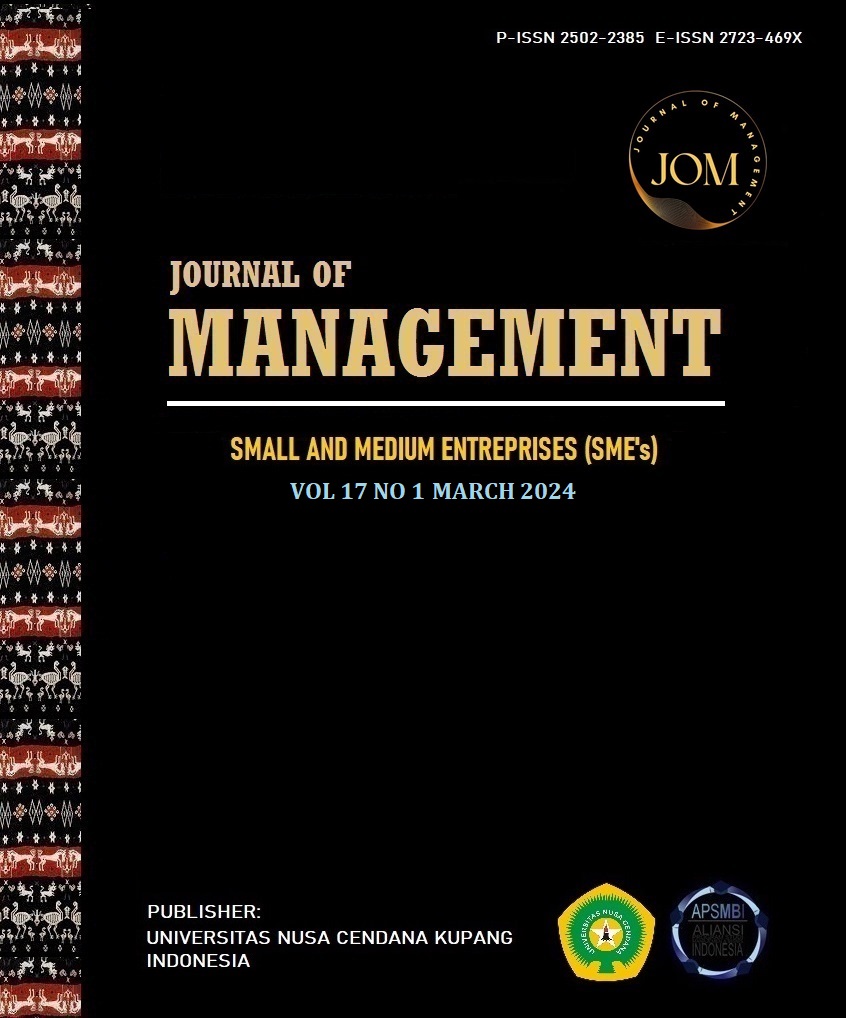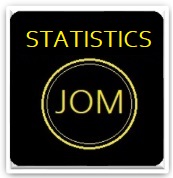THE EFFECT OF NON-PERFORMING LOANS ON BANK LIQUIDITY DURING THE COVID-19 PANDEMIC
Abstract
This study aims to determine the impact of the Covid-19 pandemic on banking liquidity in Indonesia. This study used data samples from 25 banks in Indonesia listed on the stock exchange from 2016 Q1 – 2021 Q4. Data collection for 6 years was chosen to determine banking trends before and during the pandemic. The research method used was regression panel data using the independent variable non-performing loan ratio and the dependent variable loan-to-deposit ratio to measure bank liquidity. The period before the COVID-19 pandemic (2016 Q1 - 2020 Q1) and after the COVID-19 pandemic (2020 Q2 - 2021 Q4) used dummy variables. The result was that the ratio of non-performing loans affected bank liquidity during the COVID-19 pandemic. This is due to the disruption of bank cash inflow because many debtors have difficulty fulfilling obligations to the bank.
Keywords: Banking Liquidity; Credit Risk; Non-Performing Loans
Downloads
References
Andrianto,D.F. & Anang F . (2019). Bank Management. CV. Qiara Media Publishers.
Bell, A., & Jones, K. (2015). Explaining Fixed Effects: Random Effects Modeling of Time-Series Cross-Sectional and Panel Data. Political Science Research and Methods, 3(1), 133-153. doi:10.1017/psrm.2014.7
Bourke, P. (1989). Concentration and other determinants of bank profitability in Europe, North America and Australia. Journal of Banking and Finance, 13(1),65–79. https://doi.org/10.1016/03784266(89)90020-4
Baltagi, B. H. (2021). Econometric analysis of panel data (Sixth edition). https://doi.org/10.1007/978-3-030-53953-5
Banks, E. (2005), ìLiquidity Risk: Managing Asset and Funding Risk.îPal- grave Macmillan.
Banque de France. (2008, February). Liquidity in a time of financial turbulences. Financial Stability Review – Special issue on liquidity, I-VI.
Central Bureau of Statistics. (2020, 05 08). Central Bureau of Statistics. Retrieved from Official News Statistics: https://www.bps.go.id/pressrelease/2020/08/05/1737/-ekonomi-indonesia-triwulan-ii-2020-turun-5-32-persen.html
Dermine, J. (1986). Deposit rates, credit rates and bank capital. Journal of Banking & Finance, 10(1), 99–114. https://doi.org/10.1016/0378-4266(86)90022-1
Diamond, D. W., & Rajan, R. G. (2005). Liquidity shortages and banking crises. The Journal of Finance, 60(2), 615–647. https://doi.org/10.1111/j.1540-6261.2005.00741.x
Ejoh, N. O., Okpa, I. B., & Egbe, A. A. (2014). The impact of credit and liquidity risk management on the profitability of deposit money banks in Nigeria.
Elaine H. C., & Thomas R. C., (2015). Understanding Balance Sheets. In C. Elaine Henry, C. Thomas R. Robinson, C. Wendy L. Pirie, & C. Michael A. Broihahn, International Financial Statement Analysis (pp. 193-242). Hoboken, New Jersey: John Wiley & Sons, Inc.
Fasa, M. I., Hendri, L., & Suharto. (2021). “Black Hole” Debt Restructuring and Banking Measures Strengthening Performance and Role of Intermediation: Islamic and Commercial Bank In Indonesian. Integrated Journal of Business and Economic, 5, 75–84. https://doi.org/10.33019/ijbe.v4i3.314
Financial Services Authority. (2020). Financial Services Authority. https://www.ojk.go.id/id/berita-dan-kegiatan/info-terkini/Documents/Pages/Dorong-Pemulihan-Ekonomi-Nasional%2C-OJK-Optimalkan-Sinergi-Kebijakan/Dorong%20Pemulihan%20Ekonomi%20Nasional%2C%20OJK%20Optimalkan%20Sinergi%20Kebijakan.pdf
Goodhart, C. (2008). Liquidity risk management. Banque de France Financial Stability Review, 11, 39-44.
Governor of Bank Indonesia. (2004, April 12). JDIH BPK RI Database Regulations. Retrieved from Bank Indonesia Regulation: https://peraturan.bpk.go.id/Home/Details/137709/peraturan-bi-no-610pbi2004
International Monetary Fund. (2020). World Economic Outlook, April 2020: The Great Lockdown. Washington DC: IMF.
Iswi H, S. M. (2010). Restructuring and Elimination of Bad Loans. Jakarta: PT Elex Media Komputindo KOMPAS GRAMEDIA.
Jakarta Provincial Government . (n.d.). Jakarta's Covid-19 Response Team. Retrieved from akarta Provincial Government Policy Timeline Regarding COVID-19 Response: https://corona.jakarta.go.id/en/kebijakan
Kosmidou, K. (2008). The determinants of banks’ profits in Greece during the period of EU financial integration.Managerial Finance, 34(3), 146–159. https://doi.org/10.1108/03074350810848036
Lix, L. M.; Keselman, J. C.; Keselman, H. J. (1996). Consequences of Assumption Violations Revisited: A Quantitative Review of Alternatives to the One-Way Analysis of Variance F Test. Review of Educational Research, 66(4), 579–619. doi:10.3102/00346543066004579
World Health Organization. (2020, March 11). World Health Organization. https://www.who.int/health-topics/coronavirus
Matz, L., & Neu, P. (2007). Liquidity risk measurement and management: A practitioner’s guide to global best practices. John Wiley & Sons (Asia) Pte. Ltd.
Mummolo, J., & Peterson, E. (2018). Improving the Interpretation of Fixed Effects Regression Results. Political Science Research and Methods, 6(4), 829-835. doi:10.1017/psrm.2017.44
Nikolaou, K., (2009). Liquidity (Risk) Concepts: Definitions and Interactions. ECB Working Paper No. 1008, http://dx.doi.org/10.2139/ssrn.1333568
Nopiyani, P. E., Sari S, N. M. W., & Kartika, R. D. (2021). The Effect Credit Restructuring Relaxation on Financial Performance in LPD Buleleng Regency During the Pandemic of Covid-19. International Journal of Social Science and Business, 5(4), 475. https://doi.org/10.23887/ijssb.v5i4.38166
Olagunju, A., David, A.O., & Samuel, O.O. (2011). Liquidity Management and Commercial Banks' Profitability in Nigeria. Research Journal of Finance and Accounting, 2, 24-33.
Rahman, M. M., Hamid, M. K., & Khan, M. A. M. (2015). Determinants of bank profitability: Empirical evidence from Bangladesh. International Journal of Business and Management, 10(8), 135–150. https://doi.org/10.5539/ijbm.v10n8p135
Seto, A. A., & Septianti, D. (2021). Dampak Pandemi Covid 19 Terhadap Kinerja Keuangan Sektor Perbankan Di Indonesia. Eqien: Jurnal Ekonomi Dan Bisnis, 8(2). https://doi.org/10.34308/eqien.v8i2.248
World Bank. (2020, May 19).
https://www.worldbank.org/en/news/press-release/2020/05/19/world-bank-group-100-countries-get-support-in-response-to-covid-19-coronavirus

 Felicia Christanto(1*)
Felicia Christanto(1*)



